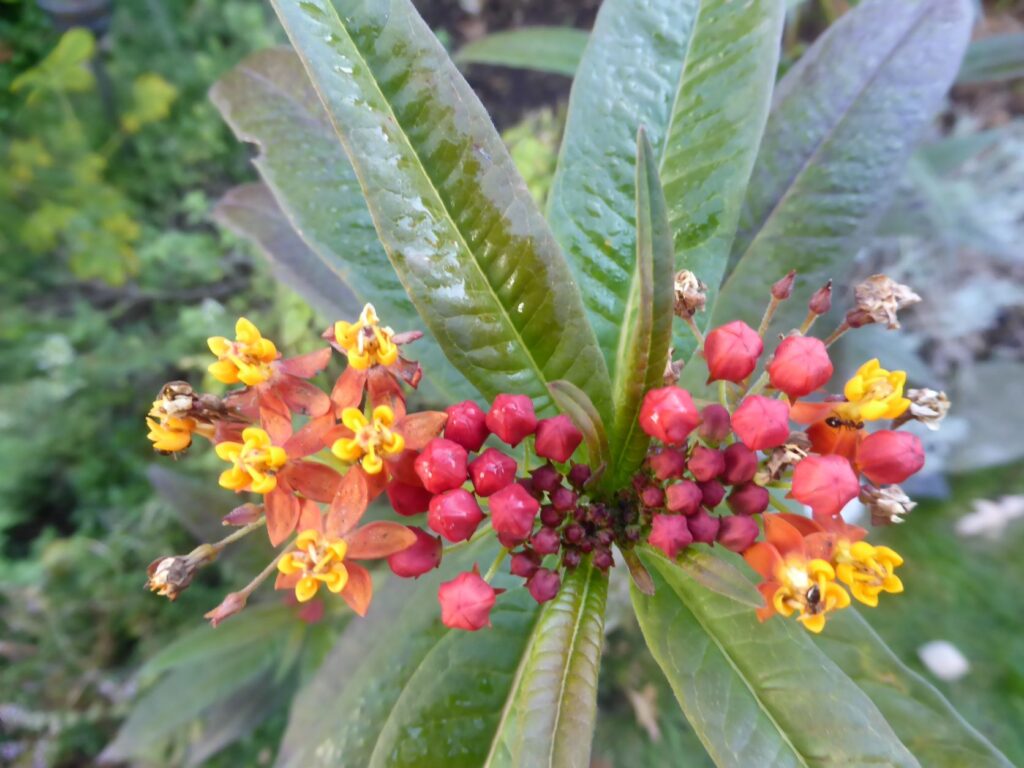
This particular flowering plant appeared in my garden and I’m not sure when it actually appeared but I think later in the summer. It is 46″ in height and is located in the south west facing garden. There are about four of them together. I am relocating plants but don’t want to dig it up until I know what it actually is
This striking plant that has appeared in your garden is likely Asclepias curassavica, available commercially under such common names as ‘Bloodflower,‘ Mexican Milkweed’ or ‘Golden Silky Milkweed.’ This non-native species of milkweed originates from the Caribbean, Central and South America, and Mexico. This plant has attracted the attention of gardeners for its showy flowers, green foliage and long growing season. It is also attractive to a variety of pollinators, including monarch butterflies, whose caterpillars seem to prefer its softer leaves to those of native species of milkweed. And it is these characteristics of the plant that may be causing a problem.
While the research is still emerging, there is evidence that Asclepias curassavica may disrupt monarch migration patterns and expose them to disease. Because Asclepias curassavica has a longer growing period than native milkweed species, studies have shown that monarchs with access to the species may abandon their typical migration patterns to breed on these plants throughout the winter, particularly in warmer locations in North America. Longer time spent on the same plants increases the concentrations of Ophryocystis elektroscirrha (OE) a protozoan parasite that travels with monarchs and is deposited on leaves, which are then consumed by the caterpillars. High OE levels in adult monarchs have been linked to a range of issues, including lower migration success, lower body mass, shorter lifespan, poor mating success, and diminished flight ability.
The degree to which Asclepias curassavica impacts monarch populations here in Ontario is not clear, given our colder climate. However, you may want to consider replacing this non-native species with one of our native species of milkweed, including:
- Asclepias syriaca (Common Milkweed)
- Asclepias verticillata (Whorled Milkweed)
- Asclepias incarnata (Swamp milkweed)
- Asclepias tuberosa (Butterfly Milkweed)
You can find more information and guidance for planting native milkweed species in Ontario from the Royal Botanical Gardens here.
Alternatively, you may consider cutting back the plant to about 15cm in October to remove food sources that may disrupt monarch migration patterns.
22/10/2022

